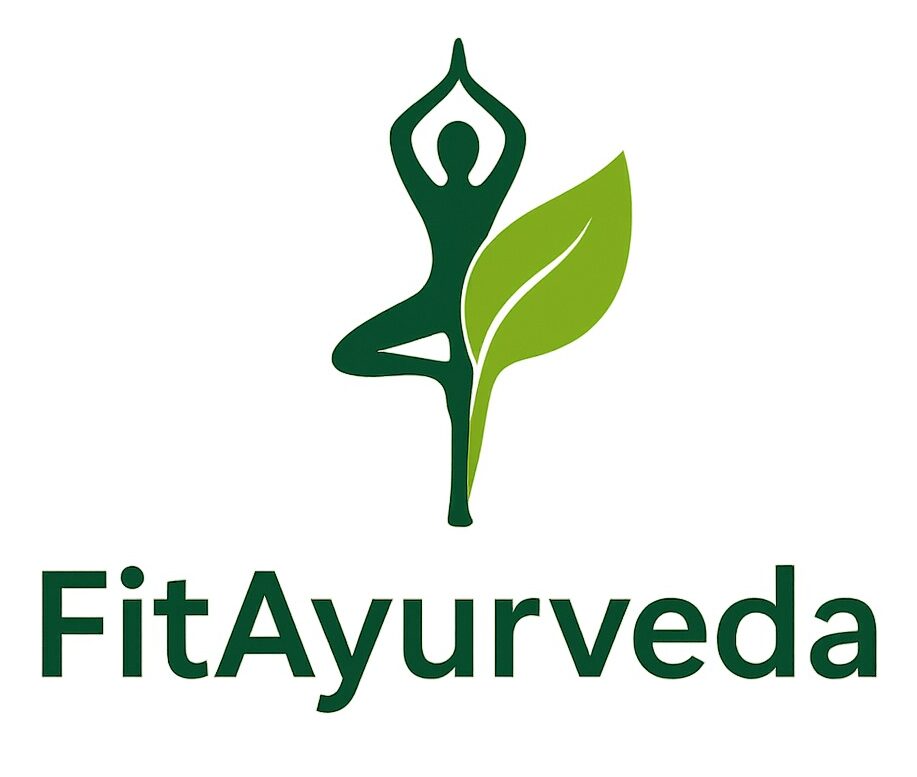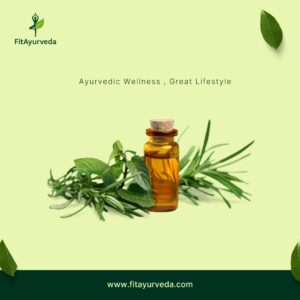Oil Pulling: The Ancient Ayurvedic Technique for Oral Health
A Morning Habit That Changes Everything
Have you ever had a moment when a traditional remedy suddenly makes sense?
For me, it happened on a quiet morning when I visited my grandmother in Jaipur.
I woke up to the smell of tulsi tea and saw her standing near the window, swishing oil in her mouth with slow, rhythmic breaths. Curious, I asked, “Nani, what are you doing?”
She smiled with shining teeth and said,
“Beta, this is kavala-gandusha… what you call oil pulling today. Do it daily and your mouth, mind, and stomach will bless you.”
That day, I tried it for the first time.
It felt strange… but incredibly refreshing.
And honestly, life has never been the same since.
Today, this ancient Ayurvedic ritual is becoming a global trend. But for us, it’s not a trend—it’s a timeless treasure passed through generations.
Let’s explore this beautiful, healing practice in the warm, human way Ayurveda always intended.
What is Oil Pulling? (In the Most Human Way)
Oil pulling is not a complex science—it’s a simple daily habit.
It means… swishing oil in your mouth for 5–15 minutes.
Think of it as giving your mouth a gentle detox bath.
Ayurveda calls it:
- Kavala – swishing
- Gandusha – filling the mouth completely with oil
The Ancient Ayurvedic Technique, It’s one of the oldest oral-care rituals described in Charaka Samhita, meant to purify the mouth, strengthen tissues, and balance doshas—especially Kapha.
Why Oil Pulling Works (In Simple Words)
Imagine toxins (ama), harmful bacteria, and food residues sitting on your tongue, gums, and tooth gaps.
Oil—especially sesame or coconut oil—acts like a magnet.
The oil binds to:
✔ bacteria
✔ toxins
✔ plaque
✔ fungus
✔ leftover acidity
That’s why when you spit the oil out, it looks cloudy or milky.
That cloudiness = toxins removed.
Oil Pulling Benefits: Why Everyone Should Try It
Let’s break down the benefits in a warm, real-life way—not theoretical jargon.
1. Fresher Breath, Naturally
If you’ve struggled with morning breath or bad breath even after brushing, oil pulling can change everything.
Oil reaches corners of the mouth where toothbrushes cannot.
You’ll notice freshness within 3 days.
People often say,
“I feel like my mouth is breathing again.”
2. Stronger Gums & Reduced Sensitivity
Gum bleeding? Pain when eating sweets? Tooth sensitivity?
Oil pulling strengthens gum tissues and reduces inflammation.
Many people find their gums tightening and strengthening within weeks.
3. Whiter Teeth (Without Chemicals)
The natural anti-bacterial properties of coconut/sesame oil help remove stains caused by:
- tea
- coffee
- turmeric
- smoking
- spices
Your smile looks naturally brighter—not artificially bleached.
4. Less Cavities & Reduced Plaque
Studies show that oil pulling reduces the bacteria responsible for:
- cavities
- plaque
- gingivitis
- tartar buildup
This means fewer dental problems and fewer expensive dentist bills.
5. Relief from Sinus & Throat Issues
Oil pulling clears excess mucus and reduces Kapha congestion.
People report improved:
- sinus clarity
- less throat dryness
- reduced post-nasal drip
- smoother breathing
Many Ayurveda followers do oil pulling daily during winters.
Daily Energy and Mental Calm
6. Better Digestion
You may wonder—what does mouth health have to do with digestion?
In Ayurveda:
Digestion begins in the mouth.
Healthier saliva, cleaner gums, and detoxed oral tissues improve:
- appetite
- nutrient absorption
- gut balance
This is why many people feel lighter and cleaner after adopting oil pulling.
7. Reduces Stress & Calms the Mind
Surprising but true!
The slow rhythmic swishing activates the parasympathetic nervous system—your body’s relax mode.
People say they feel:
- calmer
- peaceful
- centered
- emotionally lighter
It’s like a mini morning meditation.
What Oils to Use for Oil Pulling
Ayurveda recommends:
1. Sesame Oil (Most Traditional)
✔ Warm in nature
✔ Best for Vata & Kapha
✔ Strengthens gums deeply
2. Coconut Oil (Most Popular)
✔ Cooling
✔ Antibacterial
✔ Great taste
✔ Ideal for Pitta
3. Herbal Ayurvedic Oils
Like Gandusha Oil, Irimedadi Oil, Clove Oil blends.
These offer targeted healing for gum infections or sensitivity.
How to Do Oil Pulling (Simple Human-Friendly Steps)
Here’s the beginner-friendly version:
Step-by-Step Morning Ritual
Step 1: Take 1 tablespoon of oil
Sesame or coconut.
Step 2: Warm it slightly (optional)
Just lukewarm—not hot.
Step 3: Put it in your mouth
Step 4: Gently swish for 5–15 minutes
Slow gentle movements.
Don’t gargle. Don’t swallow.
Step 5: Spit out the milky oil
Into a dustbin—not the sink.
Step 6: Rinse with warm water
Step 7: Brush your teeth normally
How Often?
Daily for best results.
Minimum 4–5 times a week.
When You Should Do Oil Pulling
✔ In the morning
✔ On an empty stomach
✔ Before brushing
This helps remove night toxins (ama) accumulated in the mouth.
Who Should Do Oil Pulling?
It’s beneficial for:
- People with bad breath
- People with sensitive teeth
- Coffee/tea drinkers
- Stress-prone individuals
- Diabetics (mild oral benefits)
- Anyone who wants natural oral care
- Ayurveda followers
- People who want a brighter smile
My Personal Experience (Storytelling Element)
There was a time when I used to get mouth ulcers frequently. My dentist said,
“Your mouth is dry, and your gums are inflamed. Try something natural too.”
That’s when I restarted oil pulling.
In just two weeks:
- ulcers stopped
- breath became fresher
- mornings felt lighter
- my mind felt calmer
Sometimes the simplest ancient habits transform us in the most modern ways.
3000 Years of Wisdom in 15 Minutes
Oil pulling is not a trend.
It’s not a “hack.”
It’s a gentle reminder from Ayurveda:
“Health begins with cleansing.
Before you add anything to your life, remove what doesn’t serve you.”
This ritual removes what blocks your:
- breath
- smile
- oral health
- energy
- emotional calm
Ayurvedic Tips for Better Oil Pulling Results
1. Add turmeric for extra healing
A pinch of turmeric to the oil enhances antibacterial power.
2. Add a drop of clove oil
Best for sensitivity and gum pain.
3. Do tongue scraping afterward
Removes loosened toxins.
4. Avoid cold water after oil pulling
Always rinse with warm water.
Ayurvedic Interpretation of Oil Pulling
Oil pulling:
- Balances Kapha
- Reduces Vata dryness
- Neutralizes Pitta heat in gums
- Removes ama
- Strengthens danta-mula (gums)
- Enhances prana around mouth & throat
This is why it works holistically—not just for the mouth.
Read this blog as well for history of Oil Pulling
Final Thoughts: A Smile that Starts from Within
Oil pulling is more than a wellness habit.
It’s a daily act of self-love.
Every time you do it, you send your body a message:
“I care for you.”
From fresh breath to calm nerves—
from white teeth to inner clarity—
this small 15-minute practice carries centuries of Ayurvedic wisdom.
Try it for 7 days.
You’ll feel the difference.
Try it for 21 days.
Your mouth will thank you.
Try it for 45 days…
Your body will glow differently.
Ayurveda always knew—
A healthy mouth creates a healthy life.
Here are 10 FAQs with helpful, human-friendly answers for your blog “Oil Pulling: Ancient Ayurvedic Technique for Oral Health”.
These are SEO-optimized, reader-friendly, and written in natural human tone.
FAQs on Oil Pulling
1. What is oil pulling and how does it work?
Oil pulling is an ancient Ayurvedic oral detox practice where you swish oil in your mouth for 5–15 minutes. The oil pulls out toxins, bacteria, and plaque, leading to cleaner gums and fresher breath. It works like a natural mouth detox that cleans places a toothbrush cannot reach.
2. Which oil is best for oil pulling?
Ayurveda recommends three main oils:
- Sesame oil – Warm, healing, best for gums
- Coconut oil – Cooling, antibacterial, great taste
- Herbal oils like Irimedadi or clove blends – For sensitivity or gum issues
Choose based on your preference, but coconut and sesame oil work best.
3. Can I do oil pulling every day?
Yes, absolutely! It’s safe and even recommended to do daily, especially in the morning. Consistency gives the best results—stronger gums, fresher breath, and healthier oral hygiene.
4. Should I do oil pulling before or after brushing?
Oil pulling should always be done before brushing, early in the morning on an empty stomach. This helps remove toxins before they mix with saliva or food.
5. How long should I swish the oil?
For beginners: 5 minutes
For regular practitioners: 10–15 minutes
Avoid overdoing it—gentle swishing is enough. If your jaw hurts, reduce the time.
6. Can oil pulling whiten teeth?
Yes, many people notice mild natural whitening after a few weeks. Oil pulling removes surface stains from coffee, tea, turmeric, and smoking, giving teeth a cleaner, brighter appearance.
7. Is oil pulling safe during pregnancy?
Yes, oil pulling is generally safe during pregnancy. It is natural, chemical-free, and helps reduce morning breath, acidity layer buildup, and gum sensitivity. However, if using herbal oils, consult your doctor first.
8. Can oil pulling stop bad breath?
Definitely! Oil pulling is one of the best natural remedies for bad breath. It reduces bacteria that cause foul odor, especially those stuck on the tongue and gum pockets. Most people experience fresher breath within 3–5 days.
9. Can I eat or drink immediately after oil pulling?
Ideally, no.
After oil pulling:
- Spit the oil
- Rinse with warm water
- Brush your teeth
After that, you can eat or drink normally.
10. Does oil pulling have side effects?
Oil pulling is very safe when done correctly. However, avoid:
- Swallowing the oil (it contains toxins)
- Doing it when you have jaw pain
- Using poor-quality oils
Some people may experience mild jaw fatigue initially, which disappears after a few days.
Disclaimer
The information provided in this blog is for educational and informational purposes only. Ayurvedic practices, herbs, and remedies mentioned here are based on traditional knowledge and may not be suitable for everyone. Individual results can vary depending on body type, existing health conditions, and lifestyle.
This content should not be considered medical advice, nor is it intended to diagnose, treat, cure, or prevent any disease. Always consult a qualified healthcare professional or certified Ayurvedic practitioner before starting any new herbal supplement, treatment, or wellness routine—especially if you are pregnant, nursing, taking medications, or have a medical condition.


